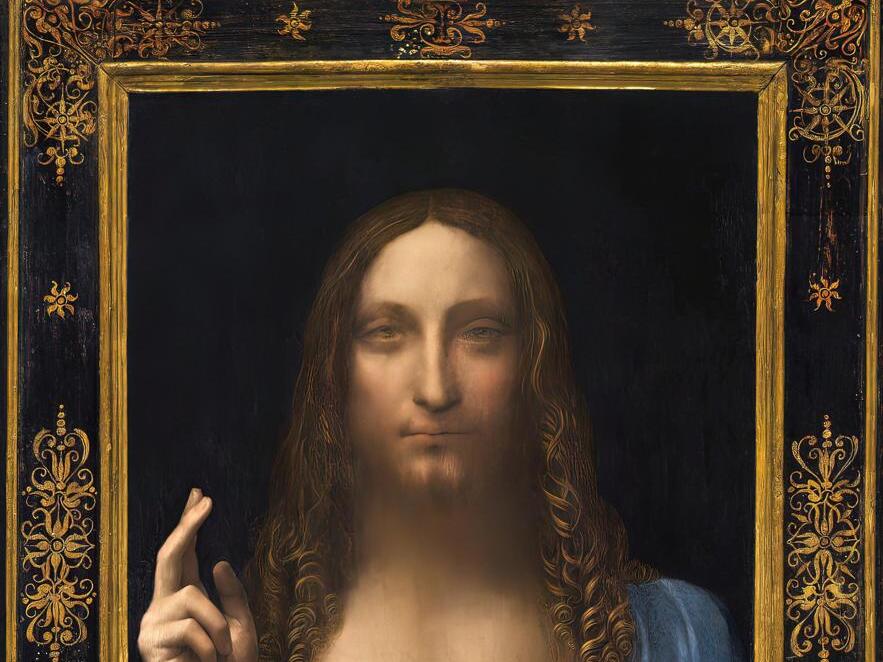Physical Address
304 North Cardinal St.
Dorchester Center, MA 02124
Physical Address
304 North Cardinal St.
Dorchester Center, MA 02124

The layers of dirt and over-paint on a Renaissance masterpiece can hide the truth underneath. In the case of Salvator Mundi, an enigmatic depiction of Jesus Christ attributed to Leonardo da Vinci, the painting’s mystique is rivaled only by the mystery surrounding its whereabouts and history.
Recently, another piece of this puzzle emerged, shedding light on the fate of this record-breaking $450 million (£360 million) artwork. Although the lifeless, serene portrait dates back to 1500, it has impacted two major European museums—the Louvre in Paris and London’s National Gallery—and has sparked lawsuits and disputes among art historians and top auction houses.
According to a BBC documentary on Saudi Arabia, Salvator Mundi is set to become the star attraction of a new museum in Riyadh. This move is seen by some as an effort by a Gulf prince to “art-wash” the kingdom’s tarnished human rights record. The painting’s notoriety following its staggering sale in 2017 and subsequent disappearance, combined with its association with Leonardo’s Mona Lisa, seems poised to put this new Saudi museum on the cultural map.
Alison Cole, editor-at-large at the Art Newspaper, expressed little surprise at the revelation, suggesting the painting will be the anchor exhibit of a large new museum in Riyadh. She recalls that the painting was dubbed the “male Mona Lisa” by Leonardo expert Martin Kemp, a term enthusiastically used by Christie’s when they auctioned it in 2017. Francois de Poortere of Christie’s had famously remarked that “You could buy it and just build an entire museum around it.”
The documentary The Kingdom: The World’s Most Powerful Prince aired on August 19, featuring a Princeton University professor who discussed the plans for a significant museum with Saudi Arabia’s crown prince, Mohammed bin Salman. The prince, who discreetly purchased the painting for its record-setting price, appears to be holding the artwork in a Geneva vault, awaiting its debut in the yet-to-be-completed museum. Bernard Haykel, a Princeton academic, indicated that the Saudi culture minister, Prince Badr bin Abdullah, confirmed this arrangement.
If the Salvator Mundi indeed becomes the highlight of a Riyadh museum, it will mark the second Gulf “outlet” for the Louvre, following the Louvre Abu Dhabi’s opening coinciding with the 2017 auction. Initially expected to reappear in Abu Dhabi, the painting’s future in Riyadh has significant implications.
The art dealer and writer Kenny Schachter claimed that the painting had been kept on Prince Mohammed’s massive yacht, a climate-controlled environment he deemed perfect for safeguarding such an artwork. Schachter’s views remain blunt—he believes Prince Mohammed would keep the painting close, given his lavish lifestyle and disregard for human rights, as evidenced by the 2018 murder of journalist Jamal Khashoggi.
If seeking a reproduction of Salvator Mundi, one might explore a small museum in New York devoted to the controversial piece. The museum, reopening after a break-in, offers ironic memorabilia featuring the image of an emotionless savior. For deeper pockets, one of around 27 early copies made in Leonardo’s workshop might be obtainable, or perhaps convincing fakes that occasionally surface in the market.
The original, a 500-year-old work known as the “Cook version” (after British merchant Sir Francis Cook, who bought it in 1900 for £120), underwent rediscovery and restoration in 2005 when a consortium purchased it for $1,000. The painting was meticulously restored by Mario and Dianne Modestini over three years. Its story will soon be dramatized in a television series starring Julianne Moore, underpinned by the 2021 documentary The Lost Leonardo.
When the National Gallery featured Salvator Mundi in a blockbuster exhibit in 2011, it became a household name. The gallery later faced scrutiny over the exhibition catalog’s strong, contested assertions of Leonardo’s involvement in the painting. Authors like Ben Lewis, who wrote The Last Leonardo, question the gallery’s method and suggest that their endorsement bolstered Christie’s auction success.
Legal battles also persist involving Sotheby’s, Swiss art dealer Yves Bouvier, and Russian billionaire Dmitry Rybolovlev, who lost a fraud claim against Sotheby’s this year, linked to his 2013 purchase of Salvator Mundi from Bouvier. Rybolovlev had stored the painting in Geneva until 2017’s spectacular auction.
The Louvre might have made lucrative Gulf deals, but it hasn’t been free from controversy. In 2019, Salvator Mundi was set for its Paris debut post-sale, with Prince Mohammed reportedly wanting it displayed beside the Mona Lisa. Despite museum denials, suppressed documents revealed by Cole indicate the Louvre had conducted a detailed scientific examination comparing the painting to La Gioconda. However, the painting was withdrawn at the last minute, allegedly on President Macron’s orders.
With its reputation stained by controversy, Salvator Mundi might indeed serve as a fitting “anchor object” for a Riyadh museum, aiming to shift global focus from Saudi’s human rights issues. While its financial value is debated, the extensive discourse and academic interest make it invaluable, warranting at least a small library’s worth of literature.
Source: The Guardian